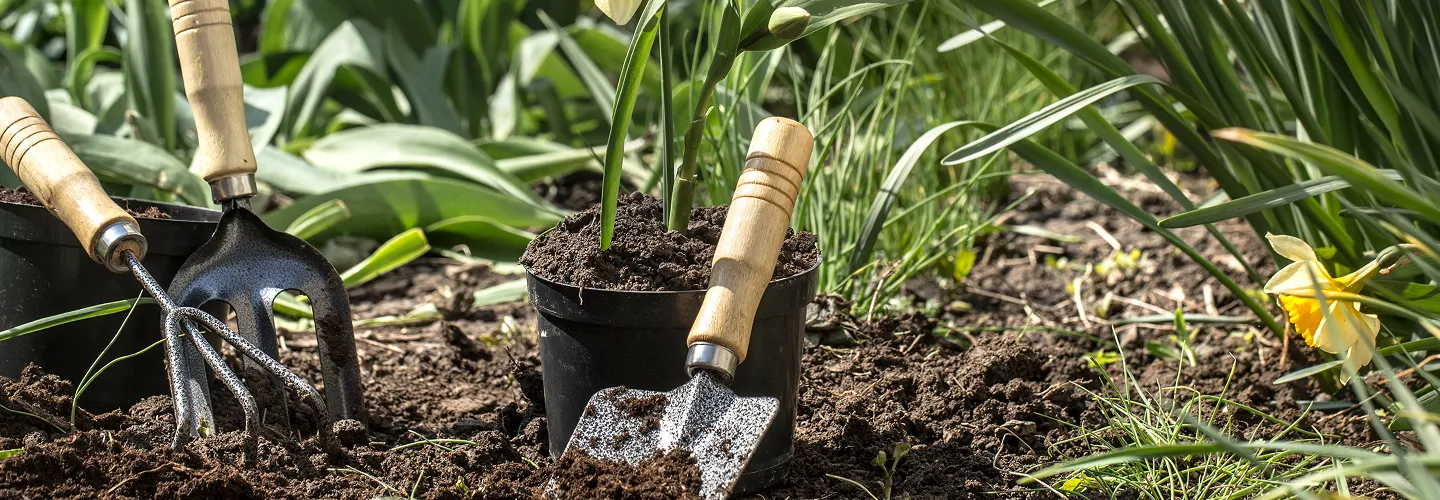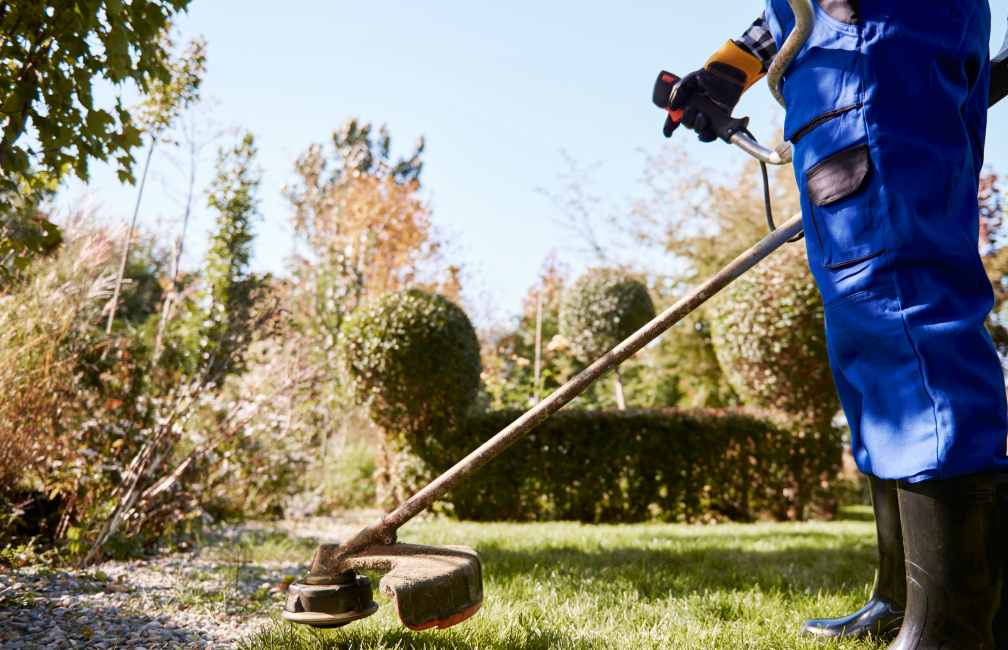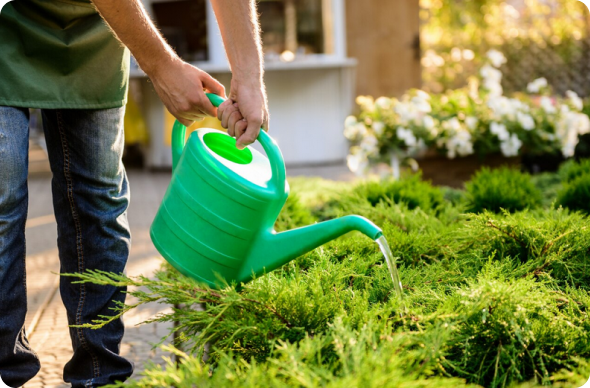
Abington Lawn Aeration Services
Choose our expert lawn aeration services to ensure deeper root growth, improved soil health, and a greener, more resilient yard that stands out all season long.
Get a Free QuoteWhen to Schedule Lawn Aeration in Abington, MA – Seasonal Guide
In Abington, MA, the best time to schedule lawn aeration is typically during the early fall, when temperatures begin to cool but the soil is still warm from summer. This timing allows grass roots to recover and grow vigorously before winter sets in. Spring can also be suitable, especially if your lawn experiences heavy foot traffic or compacted soil, but fall is generally preferred due to reduced weed competition and optimal growing conditions.
Local factors such as Abington’s average frost dates, the prevalence of clay-heavy soils in neighborhoods like North Abington, and the shade coverage from mature trees in areas near Island Grove Park all play a role in determining the ideal aeration window. Homeowners should also consider the risk of summer droughts and the region’s humidity, which can affect soil compaction and grass health. For more information on local regulations or recommendations, visit the Town of Abington’s official website.
Local Factors to Consider for Lawn Aeration in Abington
- Tree density and shade coverage, especially in established neighborhoods
- Soil type (clay, loam, or sandy soils common in different parts of Abington)
- Recent precipitation patterns and risk of drought
- Terrain and slope, which can impact water runoff and soil compaction
- Municipal restrictions or guidelines on lawn care and water usage
Benefits of Lawn Aeration in Abington

Improved Soil Health
Enhanced Grass Growth
Better Water Absorption
Reduced Soil Compaction
Increased Nutrient Uptake
Stronger, Greener Lawns

Abington Lawn Aeration Types
Core Aeration
Spike Aeration
Liquid Aeration
Slicing Aeration
Manual Aeration
Plug Aeration
Rolling Aeration
Our Lawn Aeration Process
Site Evaluation
Preparation
Core Aeration
Cleanup
Post-Aeration Review
Why Choose Abington Landscape Services

Abington Homeowners Trust Us
Expert Lawn Maintenance
Competitive Pricing
Professional Team
Satisfaction Guarantee
Personalized Service
Reliable Scheduling
Contact Abington's Department of Public Works for Soil Core Disposal & Aeration Debris Management
Strategic handling of extracted soil plugs following aeration procedures represents a fundamental aspect of responsible turf stewardship throughout Abington, Massachusetts. The town's Department of Public Works has established comprehensive protocols for organic yard debris processing that significantly impact homeowners managing post-aeration materials. Mastering these municipal standards ensures regulatory adherence while promoting environmentally conscious soil stewardship practices across this Plymouth County South Shore community distinguished by its extensive wetland systems and distinctive glacial drumlin landscape.
Abington Department of Public Works
500 Gliniewicz Way, Abington, MA 02351
Phone: (781) 982-2100
Official Website: Department of Public Works
Municipal authorities advocate permitting extracted plugs to naturally disintegrate on turf surfaces, returning essential organic compounds and mineral nutrients to the soil matrix. When removal proves necessary due to excessive accumulation, residents must employ biodegradable paper receptacles exclusively, avoiding synthetic materials that contravene Massachusetts General Law Chapter 111, Section 150A. Effective management strategies include allowing plugs to air-dry 48-72 hours before redistributing via mowing operations, staging collected materials away from wetland boundaries and stormwater conveyance systems, sweeping hard surfaces clean to prevent soil from entering catch basins, and synchronizing with municipal transfer station operating schedules. This methodology particularly benefits Abington's glacial till soils that require organic enrichment to enhance structure and counteract natural clay content creating challenging growing environments.
Understanding Soil Compaction in Abington's South Shore Glacial Till and Outwash Plains
Abington's intricate geological foundation encompasses glacial till drumlins interspersed with sandy outwash plains and extensive wetland basins characteristic of the South Shore region, generating multifaceted soil management challenges throughout this southeastern Massachusetts suburban community. According to USDA Web Soil Survey analysis, dominant soil classifications include Paxton and Woodbridge fine sandy loams on drumlin highlands, Canton and Charlton complexes on elevated knolls and slopes, plus Carver coarse sand and Plymouth loamy sand on outwash terraces. Poorly drained zones encompass Ridgebury fine sandy loam and Whitman fine sandy loam in inter-drumlin valleys, while organic Freetown and Scarboro series dominate wetland areas along the Shumatuscacant River, Beaver Brook, and Island Grove Pond watersheds.
The glacial till formations contain clay-enriched substrates that impede water infiltration and root expansion, particularly under concentrated pedestrian traffic from suburban development patterns and recreational activities throughout the town's conservation areas. The drumlinized topography creates steep gradients with variable drainage characteristics that channel runoff on slopes while generating poorly drained conditions in depressions between hills. Sandy outwash deposits drain rapidly yet develop surface crusting and compaction layers that restrict vital water infiltration and oxygen exchange, especially problematic during dry spells when these formations become extremely difficult to rewet.
University of Massachusetts Extension Center for Agriculture, Food and the Environment
161 Holdsworth Way, Amherst, MA 01003
Phone: (413) 545-2766
Official Website: University of Massachusetts Extension
These circumstances manifest as persistent standing water following precipitation events despite comprehensive drainage infrastructure, severe soil resistance indicating hardened compacted layers, declining turf vigor during summer stress periods despite adequate moisture availability, and extensive moss establishment in shaded locations with restricted drainage between drumlin formations. Professional aeration becomes indispensable when conventional maintenance approaches cannot resolve structural limitations, with dense till areas typically requiring annual autumn applications using specialized equipment capable of penetrating clay layers, while sandy outwash zones benefit from biennial treatments combined with organic enrichment programs.
Abington Conservation Commission Guidelines for Core Aeration Near Protected South Shore Wetlands
Environmental protection mandates substantially influence lawn aeration activities throughout Abington, particularly near the Shumatuscacant River, Beaver Brook, French Stream, Island Grove Pond, Great Pond, Ames Nowell State Park borders, and numerous protected wetland complexes that characterize this South Shore community's rich ecological heritage. The Abington Conservation Commission enforces rigorous buffer zone restrictions prohibiting mechanical soil disturbance within 100 feet of certified wetland boundaries and 200 feet of perennial stream channels, as required by the Massachusetts Wetlands Protection Act.
Abington Conservation Commission
500 Gliniewicz Way, Abington, MA 02351
Phone: (781) 982-2100
Official Website: Conservation Commission
Property owners formulating aeration plans must secure written authorization when operating within designated buffer zones or environmentally sensitive regions. The commission demands comprehensive site documentation showing wetland delineations, proposed aeration locations, and thorough erosion prevention measures preventing soil displacement into protected aquatic systems. Timing limitations apply during wildlife reproduction periods, typically restricting mechanical operations between March 15 and August 31 to safeguard sensitive wetland ecosystems and nesting bird populations. Special coordination becomes necessary near Ames Nowell State Park where Massachusetts Department of Conservation and Recreation jurisdiction applies, requiring additional permits and environmental review for activities within this regionally significant conservation area.
Environmental compliance requires marking all resource areas before operations begin, removing excess plugs on slopes draining toward stream systems and pond areas, stabilizing all disturbed zones immediately with appropriate seed varieties, and avoiding waterlogged conditions to prevent rutting and sediment transport into sensitive wetland habitats.
Abington's Implementation of Massachusetts Soil Health Regulations for Aeration Operations
Massachusetts soil health regulations establish thorough standards for mechanical soil management practices, including core aeration operations conducted throughout Abington's suburban environment with its significant wetland focus and glacial landscape preservation. These regulations demand adherence to best management practices designed to safeguard groundwater quality and prevent soil erosion during aeration activities, while supporting municipal environmental protection objectives in this community where soil management directly impacts both residential landscapes and sensitive wetland ecosystems.
Massachusetts Department of Environmental Protection
One Winter Street, Boston, MA 02108
Phone: (617) 292-5500
Official Website: Massachusetts Department of Environmental Protection
Massachusetts Department of Agricultural Resources
251 Causeway Street, Suite 500, Boston, MA 02114
Phone: (617) 626-1700
Official Website: Massachusetts Department of Agricultural Resources
Implementation emphasizes timing restrictions, equipment specifications, and post-aeration stabilization requirements ensuring environmental protection while supporting effective South Shore soil management. Operations must avoid frozen or saturated conditions, utilizing hollow-tine equipment that extracts clean cores 2-3 inches deep on till soils with increased pass counts in severely compacted zones. Primary advantages include enhanced water penetration through compacted glacial till layers, improved nutrient absorption and deeper root development in challenging clay subsoils, diminished thatch accumulation and surface compaction from recreational activities, and increased biological activity supporting soil health across diverse geological conditions from drumlin highlands to wetland margins.
Post-Aeration Stormwater Management in Compliance with Abington's MS4 Program
Abington's Municipal Separate Storm Sewer System (MS4) program establishes detailed requirements for managing stormwater runoff following lawn aeration activities, particularly in developed residential areas where soil disturbance could contribute to water quality degradation in local wetland systems and the broader Taunton River watershed. The program aligns with federal Clean Water Act mandates while addressing local watershed protection priorities for wetland preservation and South Shore water quality maintenance.
U.S. Environmental Protection Agency, Region 1
5 Post Office Square, Boston, MA 02109
Phone: (617) 918-1111
Official Website: U.S. Environmental Protection Agency, Region 1
Post-aeration stormwater management requires immediate stabilization of disturbed soil surfaces through overseeding, mulching, or temporary erosion control measures. Property owners must prevent soil particles from entering storm drainage systems during the critical establishment period following aeration, particularly important in South Shore areas where runoff directly impacts sensitive wetland ecosystems and local pond systems. The EPA NPDES permit system governs municipal compliance while providing enforcement mechanisms for addressing violations. Weather monitoring becomes essential, with contractors postponing operations during predicted rainfall events using National Weather Service Boston forecasting data to prevent sediment transport and protect wetland water quality.
What Neighborhoods Do We Serve Throughout Abington, MA?
Our specialized expertise encompasses Abington's distinctive South Shore neighborhoods, each presenting unique soil management challenges requiring expert local knowledge based on glacial geology and wetland proximity.
Abington Center & Historic Town Common District: Surrounding the historic town common and Centre Avenue corridor, this region encompasses properties with Urban land-Paxton complexes and modified soils from centuries of community development, complicated by extensive underground infrastructure and mature street tree systems. Properties near the downtown core experience chronic compaction from community activities and pedestrian traffic around historic buildings, requiring annual deep-core aeration emphasizing hardpan penetration while carefully navigating utility installations and preserving mature elm, oak, and maple trees that define the traditional New England village character.
North Abington & Brockton Border Residential Heights: This sector adjacent to Brockton comprises properties on mixed glacial till and outwash deposits, characterized by higher residential density and established suburban development patterns. Properties frequently experience compaction from concentrated residential use and vehicular traffic, requiring annual autumn aeration to alleviate dense till layers and foster healthier turf establishment, particularly in areas with limited sun exposure due to mature tree canopies and challenging clay subsoil conditions.
Island Grove Park & Recreation District: Properties surrounding this significant recreational facility and pond system encompass varied glacial deposits with seasonal high water tables and intensive recreational usage impacts from swimming, fishing, and community activities. Proximity to these important community amenities necessitates careful conservation commission coordination, with aeration strategies emphasizing improved subsurface drainage while preventing impact to sensitive pond ecosystems through meticulous timing and comprehensive buffer zone compliance.
South Abington & Whitman Border Conservation Interface: This transitional zone features properties on predominantly Paxton and Woodbridge fine sandy loams with proximity to extensive conservation lands and the Shumatuscacant River corridor. Properties often contend with root competition from mature forest trees and challenges related to maintaining turf quality on compactable till soils, requiring specialized aeration approaches that address both residential landscape needs and conservation edge conditions while managing steep slopes and mature landscape features.
East Abington & Hanson Border Agricultural Transition: This area encompasses properties with variable soil conditions ranging from well-drained outwash deposits including Hinckley and Windsor sandy soils to poorly drained till inclusions with seasonal saturation challenges. Properties require tailored aeration approaches addressing both rapid drainage in sandy sections and seasonal waterlogging in depressed areas, often benefiting from organic amendments to balance moisture retention and prevent surface crusting during drought conditions.
Route 18 & Route 139 Commercial Transportation Corridors: These major transportation routes feature properties with mixed urban fill and glacial deposits experiencing surface crusting from commercial traffic and ongoing development activities. Properties face challenges from vehicular loading and construction impacts, requiring biennial aeration with compost applications to improve infiltration and establish sustainable turf in challenging roadside environments while managing salt exposure from winter road treatments and heavy commercial traffic impacts.
Abington Municipal Bylaws for Core Aeration Equipment Operation & Noise Control
Municipal noise regulations significantly impact lawn aeration service scheduling throughout Abington, with detailed restrictions governing equipment operation hours and sound level limitations in residential areas. Town bylaws typically restrict mechanical lawn care activities to weekday hours between 7:00 AM and 6:00 PM, with weekend operations limited to 8:00 AM through 5:00 PM to minimize neighborhood disturbances in this South Shore suburban community where residential density and proximity to conservation areas require careful consideration of noise impacts on both residents and wildlife populations.
Abington Building Department
500 Gliniewicz Way, Abington, MA 02351
Phone: (781) 982-2100
Official Website: Building Department
Abington Board of Health
500 Gliniewicz Way, Abington, MA 02351
Phone: (781) 982-2118
Official Website: Board of Health
Equipment specifications require compliance with EPA emission standards and Massachusetts noise pollution regulations, particularly near schools, healthcare facilities, conservation areas, and dense residential areas throughout the community. Professional contractors must maintain current licensing and insurance documentation while demonstrating competency in local regulatory requirements governing South Shore soil management activities. Best practices include scheduling autumn aeration as optimal timing while avoiding wildlife reproduction seasons and wetland protection periods, marking irrigation systems and utilities using Dig Safe protocols before operations commence, coordinating with school schedules and community events to minimize disruption, providing immediate post-aeration care through seed combinations appropriate for diverse glacial soil conditions and organic amendments designed to improve soil structure, and timing operations to avoid peak conservation area usage periods when noise restrictions protect both residential quality of life and wildlife habitat integrity throughout this environmentally sensitive South Shore wetland community.